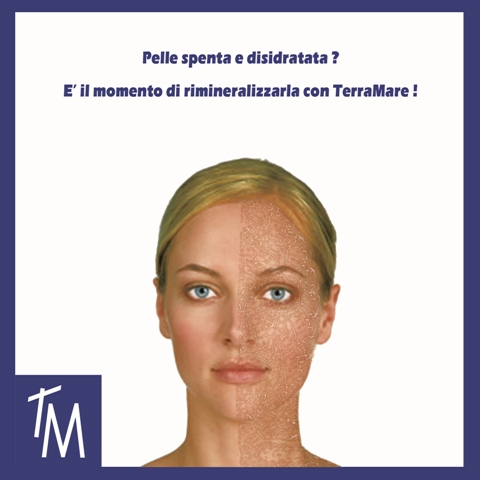- Salute e benessere
- 0 likes
- 2591 views
Looking skin visibly dehydrated and inelastic (or often scaled) is commonly referred to as "dry" environment aesthetic but also now in the doctor despite not being the most correct scientific term, but simply what makes a better idea. A dehydrated dry skin can have the following characteristics: a dull sometimes grayish-green, is thin to the touch, reddened in the throttle areas of the cheeks, often scaly and manifest the signs of premature aging. The reason of these characteristics is due to a deficiency of lipids and water failure, such that, at times, when these deficiencies are manifested exceed certain percentages of important diseases such as xerosis or, a peeling of the skin to excessive dryness and lack of production of lipids posing as pictured.
What does a dehydrated dry skin
The aesthetic industry make a distinction between dry dehydrated skin where there is shortage of water and alipidica dry skin, skin that lacks lipids important for both the hydro-lipid film that donate typical of physiologically healthy skin softness.
We therefore:
- DRY SKIN DEHYDRATED "lack of water": the lack affects the water component, important for the barrier function, for the protection and for the mechanical and chemical properties of the skin. When it concerns your face, your skin looks gray, dull and has a few stubborn blacks points.
- DRY SKIN ALIPIDICA "deficient lipid": dry skin is due to inadequate secretion of sebum. The lower production of skin fat makes the most fragile and sensitive skin, prone to wrinkles and other signs of aging.
It often happens that the situations described above coexist, giving origin to a more complex variant skin, known as DRY SKIN DEHYDRATED ALIPIDICA, in which the reduced secretion of sebum is associated with a lower functionality of the apocrine glands and of those sweat, creating a considerable condition of discomfort to the skin.
How to act against dehydration and Alipia?
Normally it intervenes with a cosmetic treatment to improve dry skin which provides for the application of more specific functional cosmetics containing substances that perform different actions such as:
humectants
Film-forming-occlusive COSMETICS
EMOLLIENT
What are the humectants cosmetic ?
The cosmetics which play humectant action are those who maintain a proper degree of moisture on the skin, contain distinctly functional hydrophilic substances (substances like water) and counteract the dryness, preventing excessive evaporation. Humectants bind the water molecules present in the external environment and at the same time the hold firmly in contact with the skin.
The most suitable wetting substances for the treatment of dry skin are:
Sugar: sorbitol, glycerol, maltitol
Alpha-hydroxy acids (at low concentrations): malic acid, tartaric acid, citric acid, glycolic acid, ubiquitous in fruits such as strawberries, grapes and lemons.
cosmetic ingredients that reproduce the hygroscopic properties (able to retain water) of the natural factor in skin hydration (NMF)
Hyaluronic acid: hyaluronic acid creams are particularly suitable to hydrate the skin deep, contrasting while the typical signs of aging, such as expression wrinkles and crow's feet.
Hydrolyzed collagen: adsorbing massive quantities of water, the collagen fibers form on the skin surface a wetting gel able to preserve the skin itself from dehydration. For this, the creams and masks to collagen are an excellent remedy for dry skin.
Mucilage, richly present in the mallow extract, aloe vera, lime etc.
Urea, also present in NMF.
As for cosmetics pursuing the film-forming and softening action in the next article we'll talk more dedicated to this imperfection, dry skin and alipidica, which is exacerbated in the winter season because of the weather and climatic conditions experienced by the skin inside home and office.













